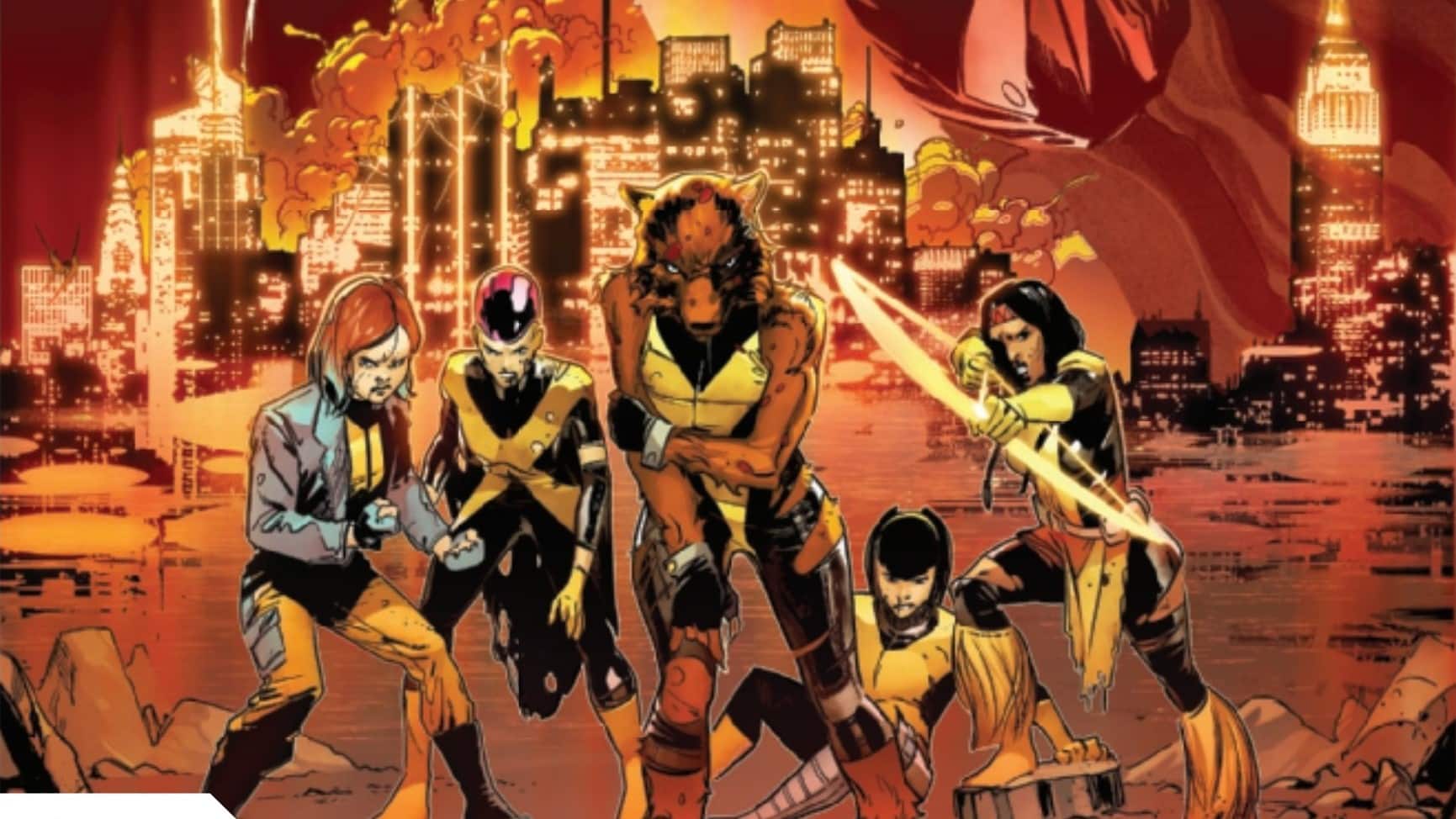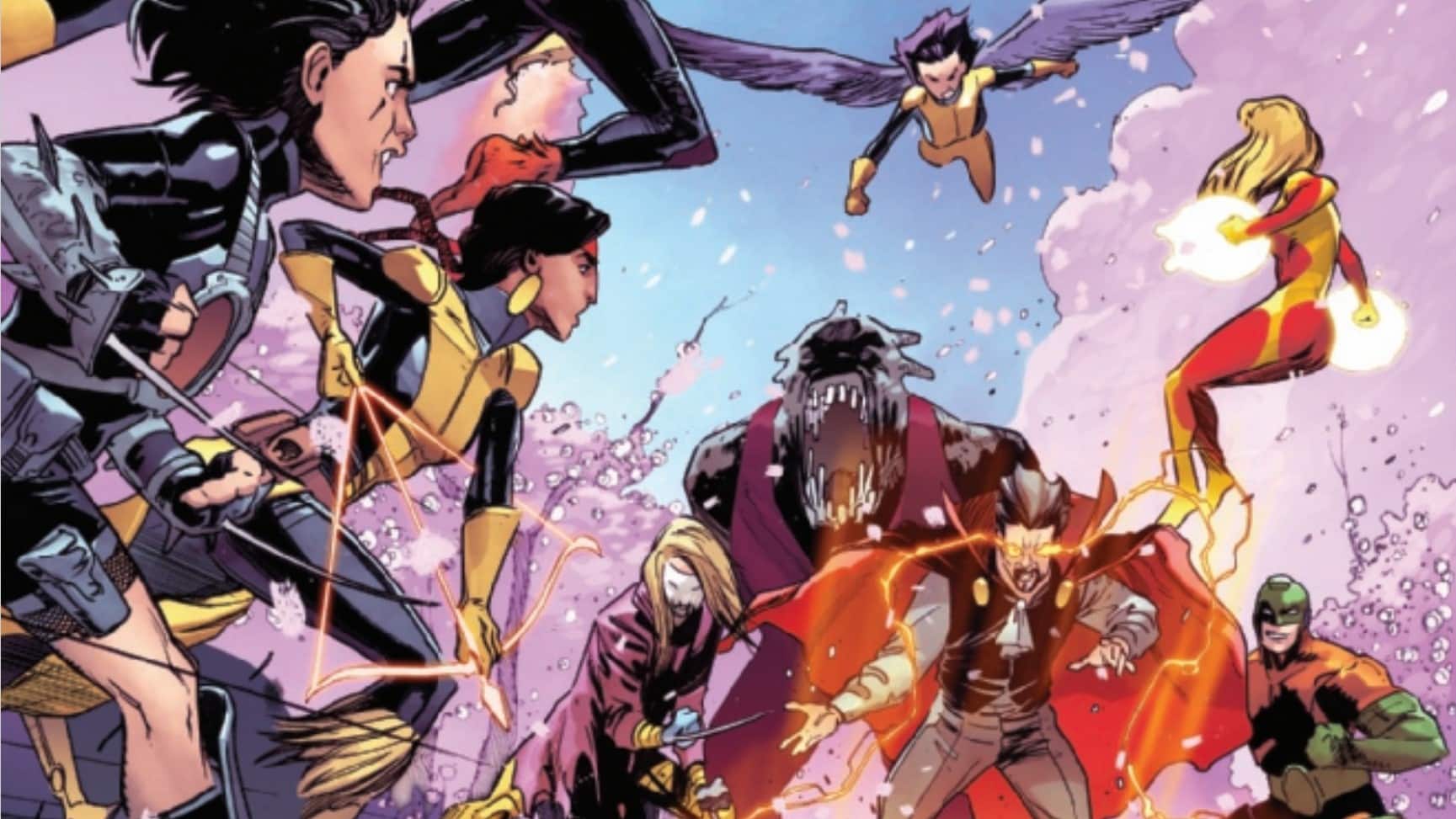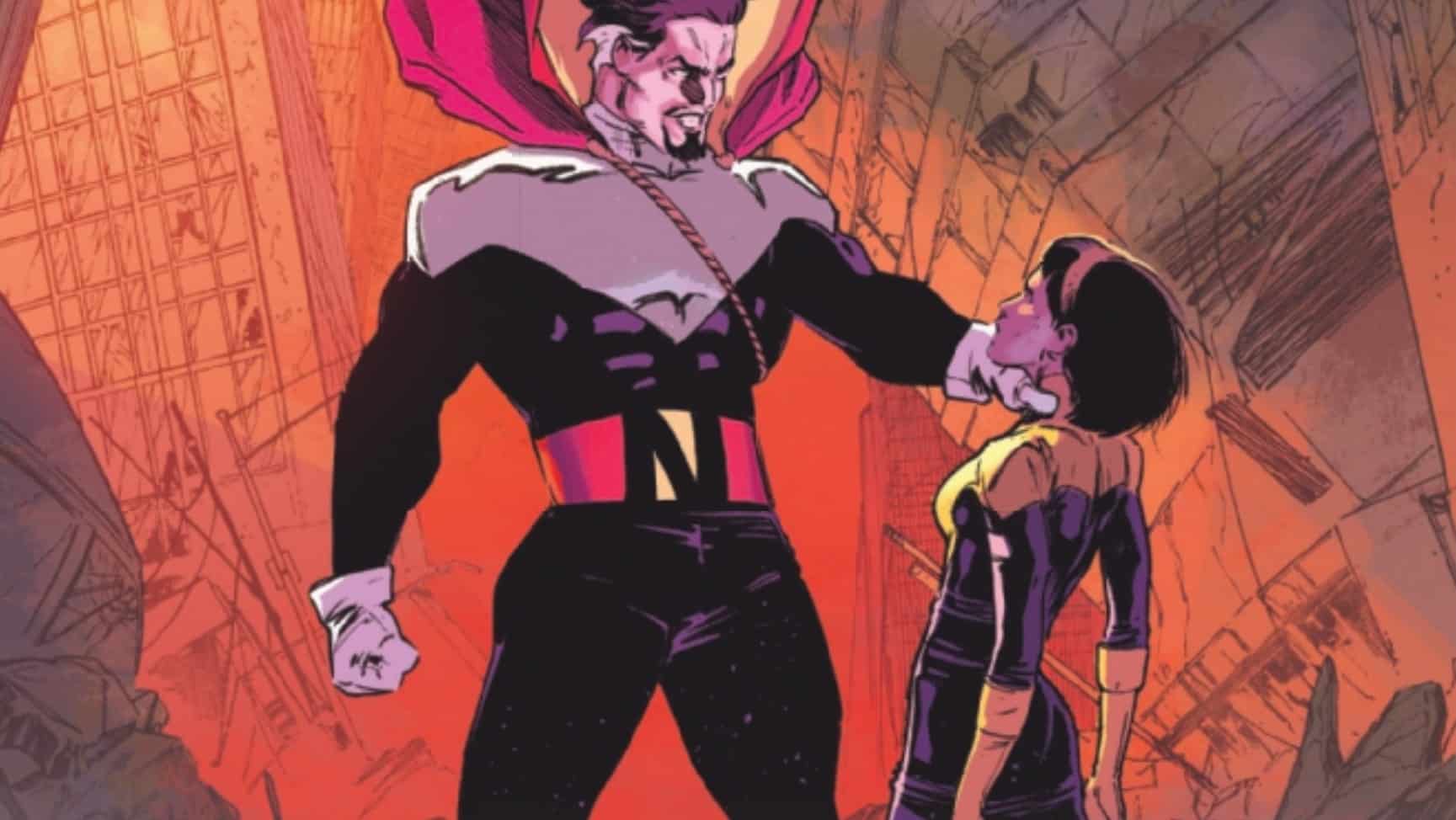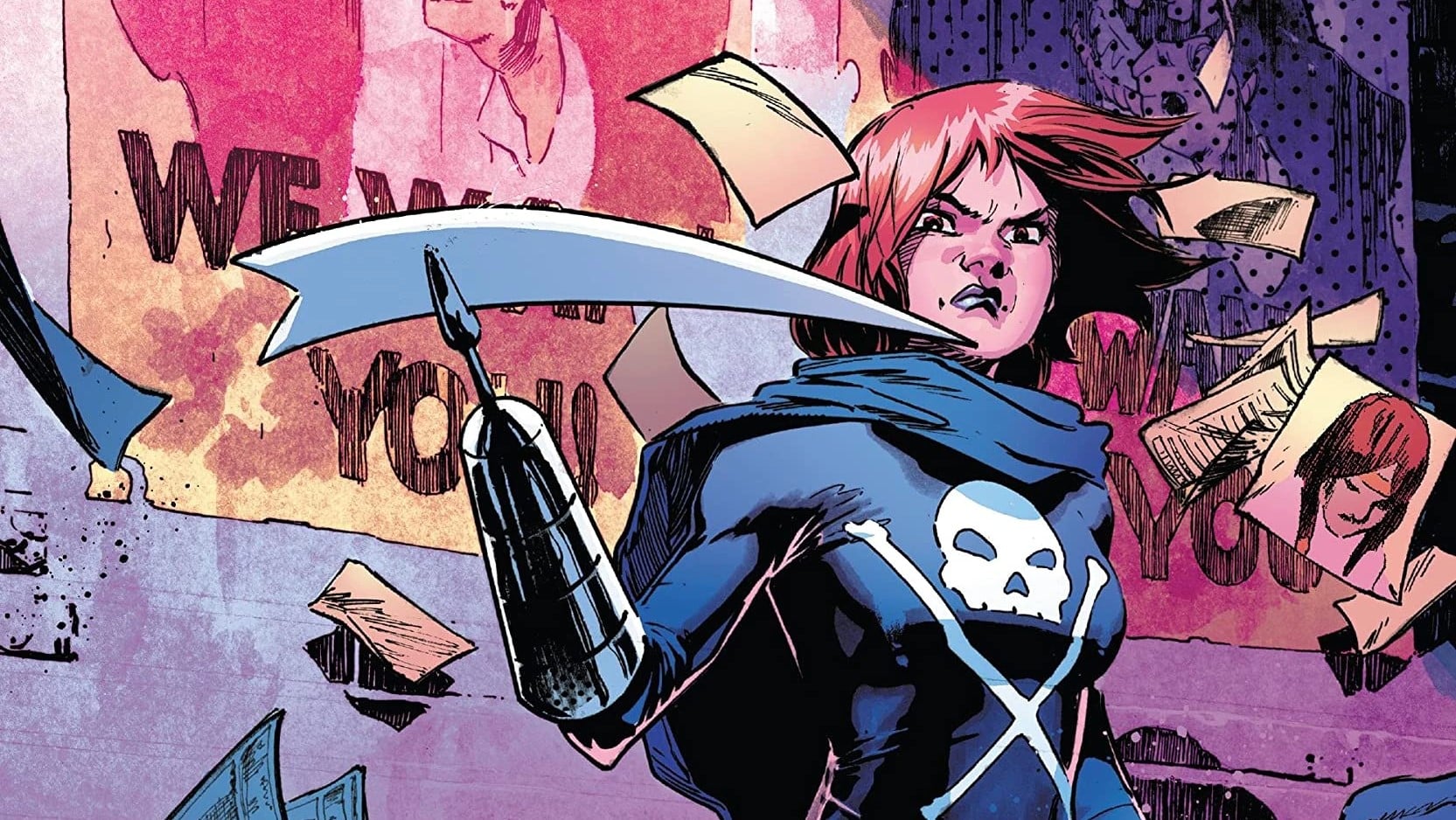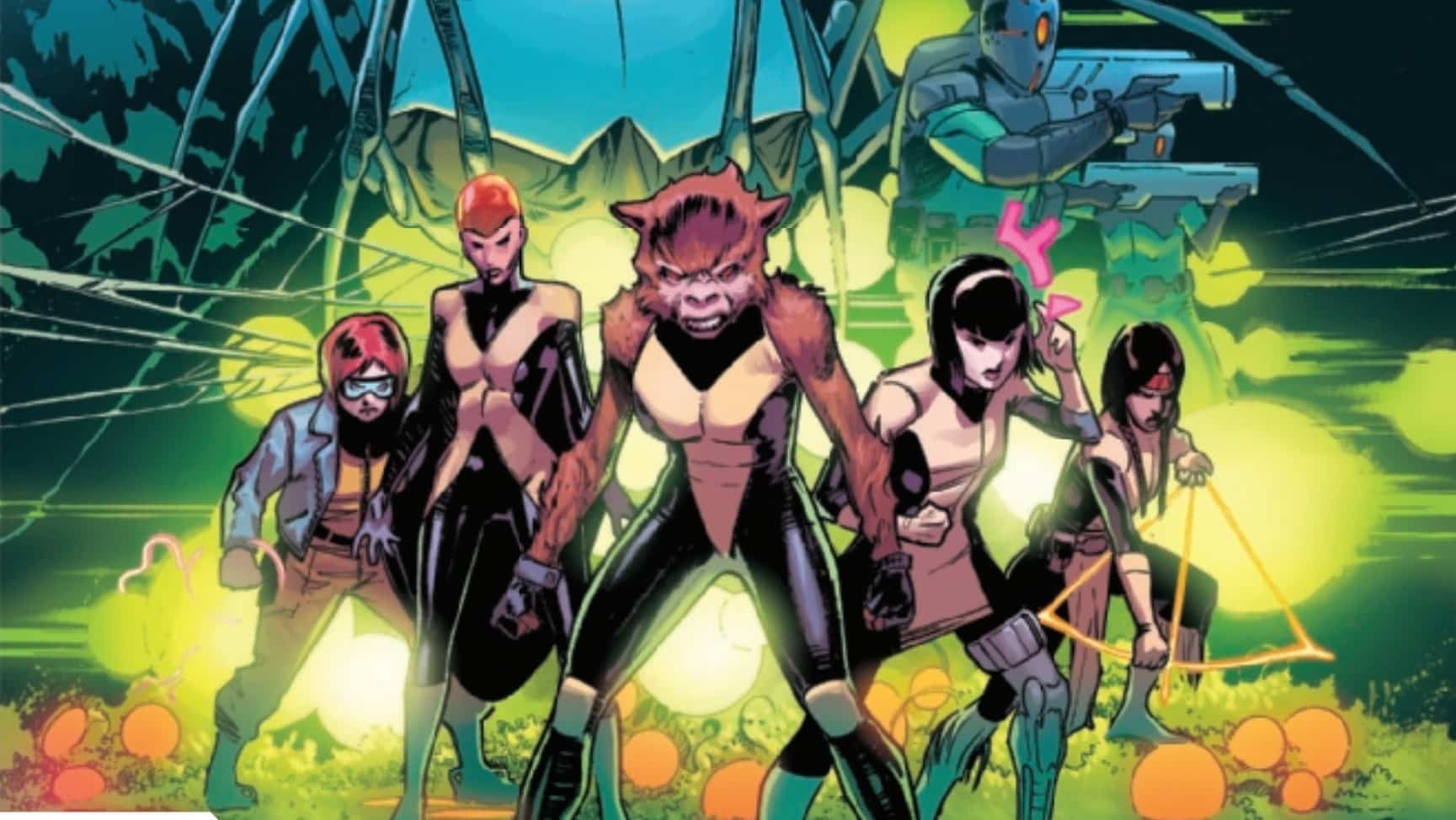Count Nefaria’s headed to the convention center, where his attempt to give himself eternal youth either will, or won’t, blow up midtown! Our heroes’ attempts to stop him either will, or won’t, heal their emotional divides! Point-of-view character Escapade either will, or won’t, star in a Marvel comic again! Our story concludes in New Mutants: Lethal Legion #5, written by Charlie Jane Anders, penciled by Enid Balám, inked by Elisabetta D’Amico, colored by Matt Milla and lettered by Travis Lanham.
Down for the Count

I hate it when things I like end. Charlie Jane Anders’ run on New Mutants, Vita Ayala’s run before that, the whole continuing New Mutants title; for that matter the era of Krakoa itself, one where every subplot proposed, or complicated, or else undermined, the notion of a nation for mutants: Sometimes I think it will all be over soon, and I am sad.
Sometimes I just read pretty good comic book arcs that stick the landing, and I’m OK with them. This second Escapade-centered arc (after New Mutants #33) takes us to the convention center where all of Count Nefaria’s ridiculous, dangerous plans will blow up, and then … there’s a big fight. Of course there is. But the outcome there feels preordained: Count Nefaria simply isn’t a big enough or a scary enough villain to plausibly blow up even a slice of midtown Manhattan. We just know he’s going to lose, and to lose in a way that requires our New Mutants to team up and draw on the power of friendship.
What we don’t know is how. Balám, Anders and company show us, almost methodically, pair by pair. Escapade and Cerebella, who have been maybe flirting since they met, investigate the convention, wishing they could keep each other safe. Each one thinks the other has cooler powers: They converse, telepathically, about the contrast — Shela to Martha: “You can wreak havoc from a safe distance. … You get to always stay yourself.” Martha to Shela: “Sometimes I wouldn’t mind being someone else.” They both look sad, close to tears, disappointed in themselves and ready to hold each other’s hands, at the very least (but not till they’ve beaten the Count).
Down in the tunnels, Wolfsbane’s befriending Beatrice the bug-eyed, sweet-tempered, easily frightened dragon. Remember Gert and Old Lace from Runaways? Similar visuals, similar dynamic, similar levels of cuteness (off the charts). Rahne thinks Beatrice should help the mutants save the city; Morgan, who’s still a little bit estranged from Shela and wary of Krakoa, thinks maybe Beatrice deserves to be left alone. But there’s a city to be saved, so off they go.
Across a Crowded Room

This time they know better than to pick a fight. Instead, Xuân Cao Manh and her partner, Galura, disguise themselves as zillionaire investors, which Xuân could actually be, what with her control over the Hatchi Corporation — writers forget she’s a titan of industry! While they dress up, other mutants infiltrate the convention disguised as janitors. Cerebella mind-controls the Unicorn into disrobing so Morgan can steal his clothes, Dani Moonstar distracts Moonstone, Shela switches bodies with a big, gray monster villain, and Morgan in Unicorn uniform tries to sneak close enough to the Count that he can disable that macguffin of a device. Moonstone, who should look powerful, looks like an afterthought, but the Unicorn — and then Morgan-as-Unicorn, with his pet turtle peeking out of the horn-hat — looks goofy and fun: I haven’t seen so many comedic costumed villains at once since the original four-issue runs of Damage Control.
There’s a lot going on in these pages, with several mind controlling, body possessing or psychic projecting heroes all doing their thing, out of costume or in somebody else’s clothes. It’s a lot to keep clear, to be honest, and the writing has to rely on the art to do that: Balám and company make it work, but it’s a stretch — you might want to reread. You might also find yourself sighing, or cheering, when the disguise plan turns into a brawl. One panel shows nine combatants in the same room! On the same page, the supposed big boss, Count Nefaria, shows up and wields his electrical powers to give everybody a headache and stop the fight. It’s fun, but it’s not terribly suspenseful, or majestic, or exciting: New Mutants fans show up for the feels, not the fights.
The feels and — in this run — the jokes, which pile up (yay!). The Chavetz (as in Javits Center Future Expo offers such gems as a green, creaky Robot Enabler, with a screen readout whose slogans encourage online trolls and alt-right creepy dudes: YOUR FRIENDS JUST DON’T GET IT, YOU’RE JUST BLOWING OFF STEAM, IT’S FINE. A spiky gray monster eats snacks from a giant plastic bag labeled GRAVY SNAKES. And when Nefaria’s device blows up, Escapade and Morgan take shelter behind a shiny beat-up piece of metal labeled RADIATION SHIELDING OF THE FUTURE. The joke is that it looks exactly like the radiation shields of times past.
Over the Top

And then the Count gets hoisted by his own petard, or seared by his own battery. “The future belongs to me!” he exclaims while activating his battery, glowing, and vibrating. Is he misquoting Cabaret? “Oh it hurts, why does it hurt so much?” he asks, his body warping and twisting. This is no time for John Cougar Mellencamp! And when Beatrice the not-a-dinosaur gobbles the Count up, keeps the Count safe in her mouth and swims away from Manhattan, we hear Nefaria shouting that he still hoped to be “Forever young!” Would that be the Dylan song or the Alphaville song, or the great Youth Group cover of Alphaville?
I’m riffing because I’m in a good mood, because the end of this series — the end of the Anders New Mutants era? — ends up so much fun, and also because the longer we read a Count Nefaria story the more ridiculous he gets. He reminds me of nothing so much as the Zot! villain Ignatius Rumbold Bellows, a steampunk bad guy who exists as an excuse for Zot to win fights. And — much as in Zot! — the silliness drops away fast when the comic shifts focus to the feelings that link the teens, who need support from one another that they can’t or won’t get from adults. They need, literally, a place to be themselves, to be together, to live without inappropriate demands on their time and their powers.
Maybe Krakoa can be that place. The last data page shows Escapade and Morgan texting, fully reconciled after their temporary estrangement over Krakoa, where Escapade relocated, where Morgan did not want to go. Now he’ll visit, at the very least. “Krakoa needs a trans hangout,” Shela pleads, and he answers, “Maybe I can help make that happen.” And he kinda does, popping in and dancing with Rahne. Don’t worry, they’re not dating: Morgan’s ace, and Wolfsbane’s learned not to date younger guys, in what must be an allusion to an infamous chapter in her own dating history. And if you’ve been wondering why Morgan thinks his powers aren’t worth much, though he can turn anything into chocolate (which seems powerful), this sequence offers answers: He can only transmute organic matter. Dog poo, for instance, or green beans, or twigs. But not, say, adamantium.
As for Cerebella and Escapade, don’t worry about their future either: After quite a lot of danger faced and misunderstandings averted and team-up moves executed, they finally, finally, surrounded by pink flashing lights, share a promising kiss. Shela knows something by now about seeking excitement, about unnecessary risks, and about how mutants take care of each other: She can let Cerebella (and vice versa) take care of her.
We should all be so lucky. Long live Krakoa, I guess. Or anyway long live the version of Krakoa that these New Mutants have come to know, in this warm and lighthearted series. Let’s see more like it. If not tomorrow, then soon.
Stephanie Burt is Professor of English at Harvard. Her podcast about superhero role playing games is Team-Up Moves, with Fiona Hopkins; her latest book of poems is We Are Mermaids. Her nose still hurts from that thing with the gate.

